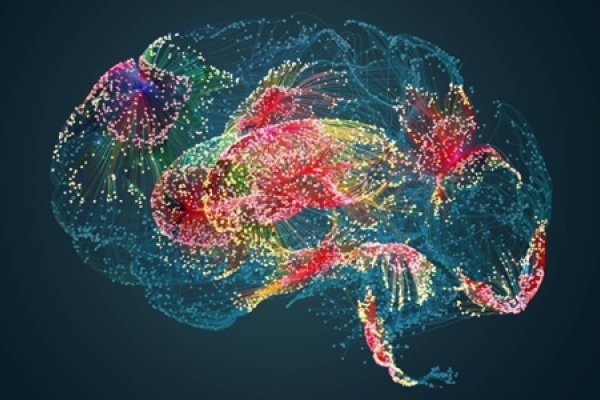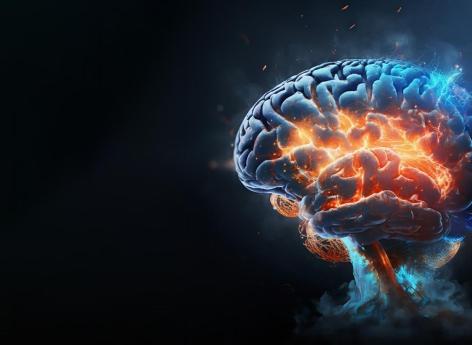They confirm the presence of microplastics in the brain – health and well-being

They are invisible to the naked eye but they are everywhere, from the water we drink to the air we breathe. Scientists have confirmed the presence of microscopic plastic in almost every corner of the human body, including the brain. Here is what is known so far about its effect:
A lifestyle that ‘poisons’
Plastic, which is ubiquitous in today’s lifestyle, slowly decomposes into very small particles that are scattered everywhere: they have been found from the summit of Everest to the Mariana Trench, 10 kilometers below sea level.
Researchers call them microplastics when they are less than 5 millimeters (mm) in diameter and nanoplastics when they are less than 0.001 mm, in both cases sizes unavailable to the human eye.
The human body, like many other living organisms, is becoming a ‘repository’ for these plastic microparticles, which, due to their size, have a great capacity to invade organs and tissues.
A study by the Australian University of Newcastle, which is carried out by the NGO WWF, estimates that an average of 5 grams of plastic enters the body every week, the equivalent of a card we eat or the air we breathe. .
Its presence has been confirmed in the placenta, breast milk, lungs, liver, spleen, kidneys, blood or brain.
A challenge to science
Extracting, characterizing and quantifying micro- and nanoplastics in the human body and understanding their impact is a challenge of enormous complexity that science is just beginning to explore.
“At the research level we are practically facing a blank canvas,” emphasizes Jamie Ross, a neuroscientist at the University of Rhode Island in an interview with EFE, who is considered one of the pioneers in highlighting the impact of microplastics on children’s brains. Rat
Ross admits that she became a scientist with the aim of helping answer the question of why two genetically identical twins were born due to different environmental factors, one developing Parkinson’s and the other not.
Or in other words, what causes Parkinson’s, the most prevalent neurological disorder today, when there is no genetic predisposition on the part of the person suffering from it.
In multiple experiments with mice, in which they fed them water with microplastics containing markers for three weeks, Ross and his team discovered that these particles cross the brain’s blood-brain barrier, producing swelling and manifesting as dementia. Changes similar to those who suffer from them.
How they escape the mind’s control
A nearly parallel investigation led by the University of Vienna found that the smallest nanoplastics cross this biological barrier just two hours after ingestion.
“Proving that microplastics cross the blood-brain barrier is a very relevant fact; we’re talking about a highly selective and controlled permeability barrier to protect our brain, allowing only what the brain needs to pass through,” Emphasis on research in cell biology. José Antonio Morales-Garcia Computense University, in an interview with EFE.
In a healthy person, when the nervous tissue becomes inflamed, the immune system fights this inflammatory agent and everything returns to normal.
The problem with diseases like Alzheimer’s or Parkinson’s is that inflammation becomes chronic and in each case destroys a specific type of neuron, dopamine in the case of Parkinson’s (which causes the motor symptoms), and a specific type of neuron in the case of Alzheimer’s. A type of neuron called cholinergic, which regulates short-term memory in the hippocampus.
What science has been able to confirm is that, once they trick the brain’s ‘safety arc’ and enter it, microscopic plastic particles cause persistent and prolonged inflammation in the same areas, giving rise to similar changes. is These diseases.
Despite the enormous complexity of progress in this field, research with mice, the most widely used animal in neuroscience, has also found that these particles affect communication between neurons and the production of neurotransmitters.
The result would be similar to someone whose mobile keyboard has been inadvertently modified and is unintelligible when it comes to typing his message, an example of a complacency researcher.
Sufficient evidence to stop
Beyond the findings known so far, science still has a whole canvas to paint to provide a clearer picture of how these tiny plastic challenges cross the brain’s protective barrier and what their life cycle is once inside.
Although scientific information is still limited, the researchers advised that there is “enough evidence” to avoid plastic pollution as much as possible and to put aside everything we use made of or wrapped in this material unless it is absolutely necessary. .
Source: EFE Agency





